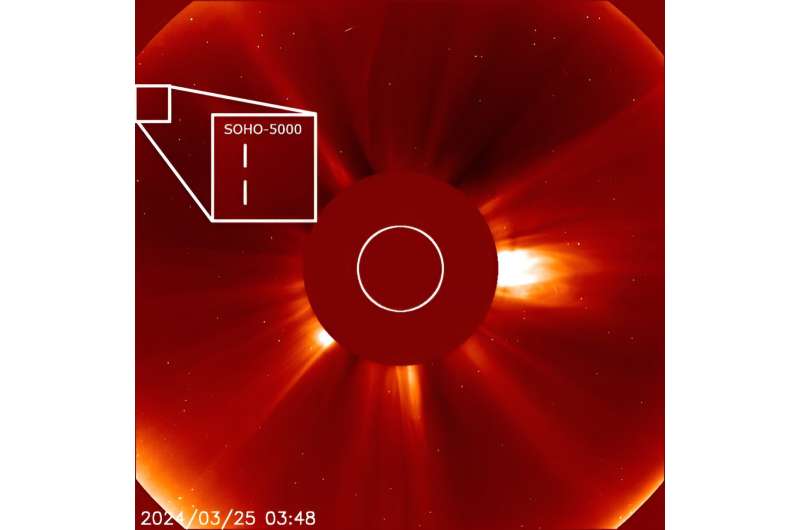This article has been reviewed according to Science X's editorial process and policies. Editors have highlighted the following attributes while ensuring the content's credibility:
fact-checked
preprint
trusted source
proofread
The search for the perfect coronagraph to find Earth 2.0

Studying exoplanets is made more difficult by the light from the host star. Coronagraphs are devices that block out the star light and both JWST and Nancy Grace Roman Telescope are equipped with them. Current coronagraphs are not quite capable of seeing other Earths but work is underway to push the limits of technology and even science for a new, more advanced device. A paper published on the arXiv pre-print server explores the quantum techniques that may one day allow us to make such observations.
Coronagraphs are devices that attach to telescopes and were originally designed to study the corona of the sun. The corona is the outermost layer of the sun's atmosphere but is usually hidden from view from the bright light emitted from the photosphere (the visible layer).
The device has also been modified to hide the light from stars to study faint objects in their vicinity. These stellar coronagraphs are often employed to hunt for extrasolar planets and the disks out of which they form.
There are a number of techniques to identify extrasolar planets but direct imaging is one of the chief ways to learn about their nature. The challenge, which is met by the stellar coronagraph, is the brightness of the star and the relative faintness of the planet and proximity to the star.
Coronagraphs can increase the ratio between noise (in this instance the light from the star) and the signal from the exoplanet by optically removing the light from the star. In the paper, authors Nico Deshler, Sebastian Haffert and Amit Ashok from the University of Arizona explore whether coronagraphs are the best method for hunting exoplanets.
Studying exoplanets is important to help us to learn about planetary formation, atmospheric sciences and even perhaps, the origins of life. The team approached their analysis of coronagraphic techniques by considering first the detection step and then the localization task in exoplanets research.
They first undertook a hypothesis test to see if it was likely an exoplanet existed. If the prediction played out and an exoplanet was found to exist then the team attempted to estimate its position. Turning to quantum limits for telescopic resolution, they used quantum mechanics to produced a limit of the position of the exoplanet.
The team then compared classical direct imaging coronagraphs to the quantum predictions above. It should be noted that this research was focusing on the capability of present coronagraphs to detect Earth-like exoplanets using quantum theory.
The research concludes that the complete rejection of a telescopes optical mode is key to achieving the best possible detection techniques. Host star and planet separations that are so close as to be below the diffraction limit of the telescopes are thought to be abundant across the universe. It is therefore necessary that quantum-optimal coronagraphs are developed and it is encouraging that this research finds they will yield some impressive results.
More information: Nico Deshler et al, Achieving Quantum Limits of Exoplanet Detection and Localization, arXiv (2024). DOI: 10.48550/arxiv.2403.17988
Journal information: arXiv
Provided by Universe Today





















